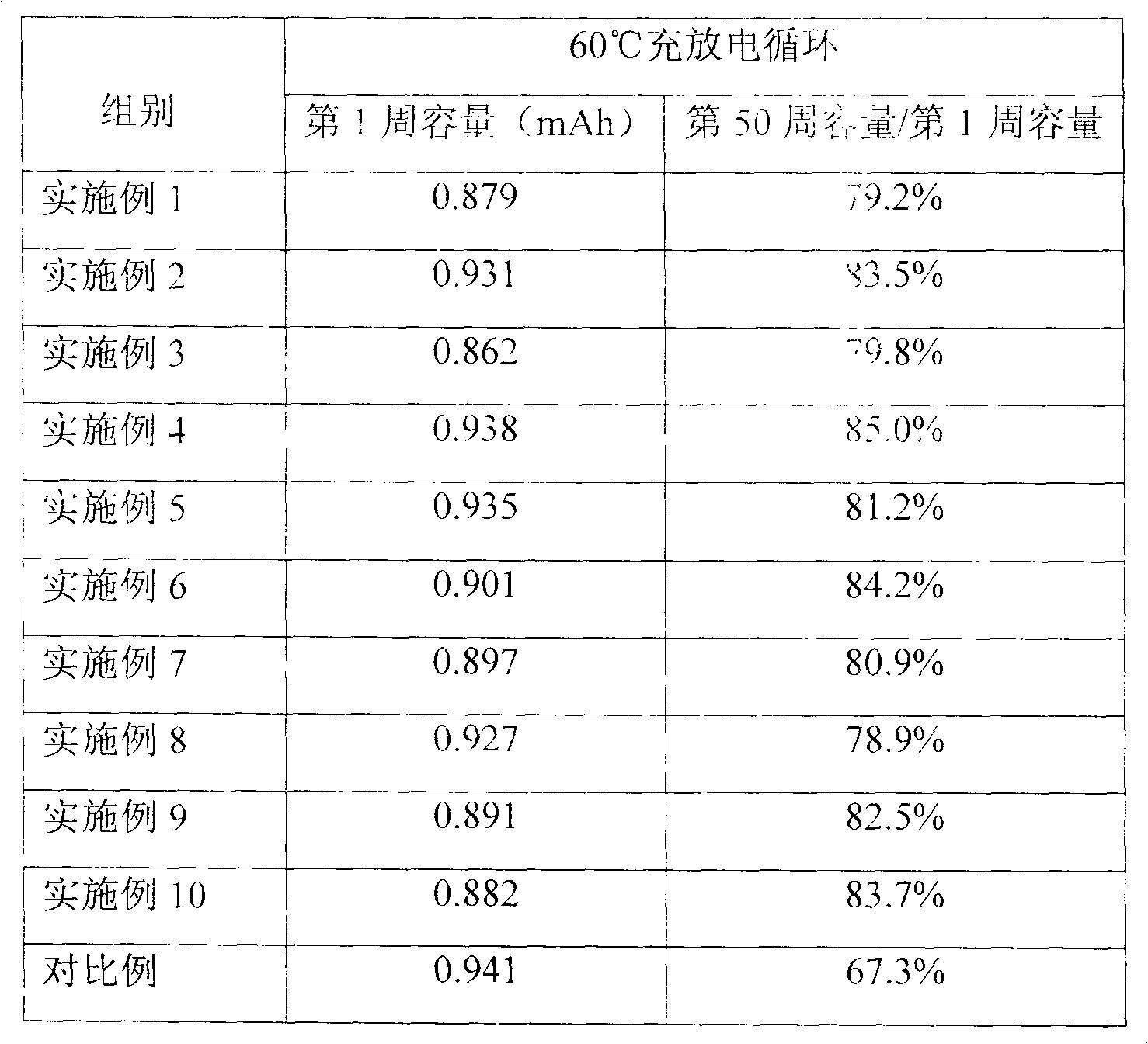Lithium secondary battery and cathode plate thereof
A lithium secondary battery and negative electrode technology, which is applied in secondary batteries, battery electrodes, circuits, etc., can solve problems such as poor high temperature performance, increased negative electrode resistance, and increased irreversible capacity of the battery, achieving good high temperature cycle performance and improving The effect of high temperature performance
- Summary
- Abstract
- Description
- Claims
- Application Information
AI Technical Summary
Problems solved by technology
Method used
Image
Examples
Embodiment 1
[0022] Preparation of the positive electrode sheet: spinel lithium manganese oxide (LiMnO 2 ), the conductive agent acetylene black and the binder polyvinylidene fluoride (PVDF) are added to the solvent nitrogen-methylpyrrolidone (NMP) according to the mass ratio of 94:3:3, and stirred and dispersed using a high-speed mixer to form a uniform positive electrode slurry. This slurry is coated on the aluminum foil current collector, and the solvent is dried. After drying, the positive electrode coating weight per unit area is 20.13mg / cm 2 , and then compact the pole piece, the density of the coating after compaction is about 3.0g / cm 3 .
[0023] Preparation of the negative electrode sheet: the elemental sulfur and acetylene black are placed in a high-speed planetary ball mill at a mass ratio of 0.5:1 to fully disperse and evenly obtain the acetylene black / elemental sulfur mixture. Negative electrode active material artificial graphite, conductive agent acetylene black, binder s...
Embodiment 2
[0027] The difference from Example 1 is the selection of the positive electrode active material and the preparation of the negative electrode sheet.
[0028] Among them, the positive active material is layered lithium manganate (LiMnO 2 ).
[0029] The preparation of the negative electrode sheet is as follows: take the negative electrode sheet prepared in the comparative example, put it into a glove box, and control the humidity in the glove box so that the dew point is lower than -40°C. Anhydrous nano-lithium sulfide (Li 2 S) Ultrasonic dispersion in n-hexane forms a suspension, which is sprayed on the surface of the negative electrode, and the sprayed Li 2 The weight of S is 0.5% of the total mass of the negative electrode active material layer. After the solvent is volatilized, the production of the negative electrode sheet is completed. Thanks to Li 2 S is relatively easy to hydrolyze, so the operating environment and solvent must be kept dry.
[0030] The rest are t...
Embodiment 3
[0032] The difference from Example 1 is the selection of positive electrode active material and the content of elemental sulfur in the negative electrode sheet.
[0033] Among them, the positive electrode active material is lithium nickel cobalt manganate (LiNi 0.3 co 0 4 mn 0.3 o 2 ).
[0034] The elemental sulfur in the negative electrode sheet accounts for 2% of the total mass of the negative electrode active material layer.
[0035] The rest are the same as in Embodiment 1, and will not be repeated here.
PUM
| Property | Measurement | Unit |
|---|---|---|
| Density | aaaaa | aaaaa |
| Density | aaaaa | aaaaa |
Abstract
Description
Claims
Application Information
 Login to View More
Login to View More - R&D
- Intellectual Property
- Life Sciences
- Materials
- Tech Scout
- Unparalleled Data Quality
- Higher Quality Content
- 60% Fewer Hallucinations
Browse by: Latest US Patents, China's latest patents, Technical Efficacy Thesaurus, Application Domain, Technology Topic, Popular Technical Reports.
© 2025 PatSnap. All rights reserved.Legal|Privacy policy|Modern Slavery Act Transparency Statement|Sitemap|About US| Contact US: help@patsnap.com

